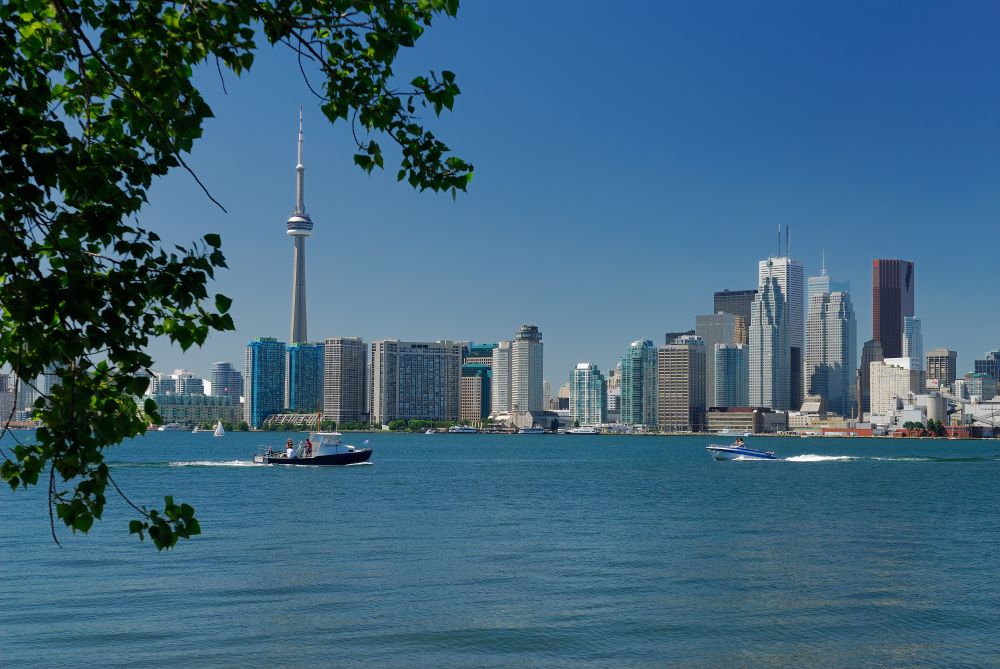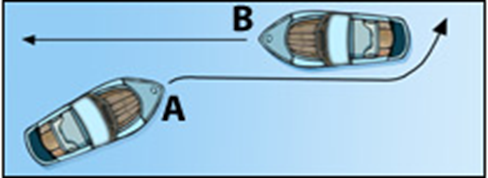
An Overview of the Collision Regulations in Canada
Pleasure craft operators must boat safely at all times and share the waterways in a manner that does not create dangerous situations for other boaters, swimmers, divers, wildlife and the environment in general.
There are many laws, regulations and codes pleasure craft operators must follow in order to minimize the risk of boating accidents, including the Collision Regulations. Any boater who violates one or more of these regulations will face penalties and/or fines.
Since the Collision Regulations are fairly lengthy and complex, our boating safety specialists have prepared an overview of the most important points to remember.
What are the Collision Regulations?
The Collision Regulations establish standards and procedures for boating on Canada’s waterways. The purpose of the regulations is to reduce the likelihood of collisions. They apply to all vessels, from small pleasure crafts to cargo ships.
The Collision Regulations outline the responsibilities of vessels underway and determine who has right of way when two boats are in an overtaking, crossing or head-on situation.
General boating regulations for good visibility conditions
When preparing to go boating, there are several precautions you must take (gather the required boating safety equipment, make sure the craft is in compliance with regulations, have your pleasure craft operator card with you, etc.).
Once underway, you must follow the rules outlined in the Collision Regulations. Here are a few:
Look-out
The Collision Regulations require every vessel to maintain a look-out at all times to help anticipate collision risks.
As the operator of a pleasure craft, you need to remain alert for visual and auditory cues (other boats may use sound signals) from any direction. You are not allowed to put your boat on autopilot and leave your post.
You are required to use all resources at your disposal (including radar and radio if applicable) to determine whether there is any risk of collision with another boat.
You should also familiarize yourself with the regulations in effect on the waterways you are planning to use (i.e. American regulations for U.S. waters). Following the rules starts before you even get underway!
Navigating narrow channels
According to the Collision Regulations, vessels navigating a narrow channel or fairway must keep close to the edge that is on their starboard side, provided that it is safe and practical to do so.
Navigating near large vessels
When navigating near large vessels, it’s important to remember that their size can make them more difficult to maneuver. It also takes longer for them to come to a full stop. For that reason, vessels under 20 m (65’7”) long and sailing ships must yield to large vessels.
A large vessel will use five or more short, distinctive sounds to remind you to give way. This signals that the situation has become an emergency and you must get out of the way to avoid a collision.
That being said, large vessels often can’t see you until it’s too late, so remember to:
- Always remain vigilant and be ready to yield to large vessels safely, taking weather and water conditions into account
- Use radar and radio if your boat has them
- Improve your small craft’s visibility by travelling in a group
- Don’t go out in high winds or fog
- Stay well clear of docked ferries, ferries underway, vessels being towed and fishing boats
- Do not cross between a tug and its tow
Navigating near vessels with limited maneuverability
Power-driven vessels must stay out of the way of sailboats, fishing boats, rowboats and any other vessels with limited maneuverability.
When changing course or speed to move away from another vessel, make it clear to the other vessel that you are performing the appropriate maneuver. If there is confusion as to which vessel should give way, use a whistle or another sound-signalling device to give five short blasts. If the operator of the other vessel doesn’t clearly indicate that they are changing course, change course yourself to get out of their way.
Safe speeds
When operating a craft, you are responsible for ensuring that it moves at a safe speed.
A speed is considered safe when reasonable measures can be taken to stop the vessel within a distance appropriate to the prevailing circumstances and conditions. This is particularly important for reducing the risk of collisions in low visibility.
Crossing situations
In a situation involving two power-driven vessels (any vessel that is propelled by gas, diesel or steam-powered machinery) where vessel A is approaching the port side of your boat (B) and there is a risk of collision, you are the stand-on vessel (you have the right of way).
To avoid a collision, maintain your course and speed, unless it becomes apparent that the give-way vessel (vessel A) is not performing the appropriate maneuver. The other vessel is required to move out of your way.
If, on the other hand, a power-driven vessel is approaching the starboard side of your boat and there is a risk of collision, you are the give-way vessel. You must move out of the way and avoid crossing in front of the other boat. As the stand-on vessel, the other boat has right of way and must maintain speed and course.
Head-on situations
If a power-driven vessel (A) is approaching your boat (B) head-on and there is a risk of collision, you must both alter course to starboard so that you can pass each other on the port side.
Overtaking situations
A vessel overtaking another boat should maneuver around it decisively and safely so as to leave it adequate room to continue on its course.
Become a boating safety expert with the help of the NBSS
In order to operate a craft safely, you’ll need to keep these key points from the Collision Regulations in mind.
Remember that in order to follow Canadian boating regulations, you are required to have your Pleasure Craft Operator Card with you at all times. Get your boating license online and make the most of our group discounts!
Find out more about boating safety and pleasure crafts from the National Boating Safety School. Our boating safety course and blog are great resources for new boaters and more experienced hands who need to study for the online boating exam or just want to refresh their memory before hitting the water!




